


 |
 |
 |
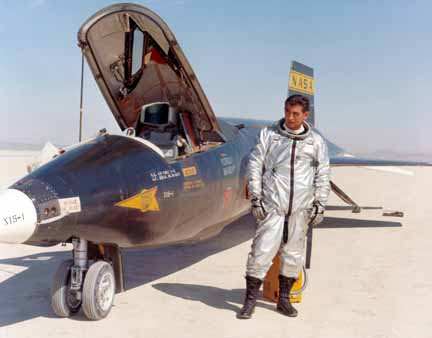

![]()
![]()
![]()
![]()
![]()
![]()
![]()
![]()
Michael Adams Sr. was born in Sacramento, California on May 5, 1930, to Michael and Georgia Adams, the oldest of two brothers. Michael graduated from high school in 1948, going on to Sacramento Junior College, graduating in 1950 with an AA in Forestry. Adams served as a fighter-bomber pilot during the Korean conflict, followed by 30 months with the 613th Fighter-Bomber Squadron at England AFB in Louisiana and six months rotational duty at Chaumont Air Base in France.
Michael entered the U.S. Air Force on November 22, 1950, undergoing Basic training at Lackland Air Force Base. After Basic, he served with the 3501st Pilot Training as a Link Trainer instructor until he was selected as an Aviation Cadet. He underwent initial training at Spence, Georgia, October 1951. From Spence he went to Webb AFB, Texas, for Advanced training where he earned his wings on October 25, 1952, at Webb AFB, Texas.
After Advanced, it was on to Nellis AFB, Nevada for gunnery school, where he flew F-80s and F-86s. Upon completion, 1LT Adams was shipped off to Korea in April of 1953. As a 1st Lieutenant, Flight Commander 618th Fighter-Bomber Squadron, Korea, he flew a total of 49 combat missions.
Returning from Korea in February 1954, Lieutenant Adams served another three years as a flight commander in fighter squadrons in the U.S. and France. It was during his tour at the 613th FBS in Louisiana that Michael and Frieda Beard were married.
In the fall of 1956, Michael entered the University of Oklahoma, as part of an Air Force career development program for promising officers. He earned his Aeronautical Engineering degree in 1958. He went on to do his graduate work in Astronautics at the Massachusetts Institute of Technology. Completing these studies, Michael went to work at Chanute AFB, Illinois as an instructor. During this time he was selected as a student at the USAF Test Pilot School at Edwards AFB.
Adams graduated from Test Pilot School in 1962 as the outstanding pilot and scholar in his class. For this, he was awarded the Honts Trophy. He was then selected to attend Chuck Yeager's Aerospace Research Pilot School, from which he graduated in 1963.
Major Michael Adams' decorations and awards:
Air Medal
Air Force Commendation Medal
Korean Service Medal
United Nations Service Medal
National Defense Service Medal with 1 Bronze Service Star
Air Force Longevity Service Award with 4 Clusters
Air Force Good Conduct Medal
Honts Trophy
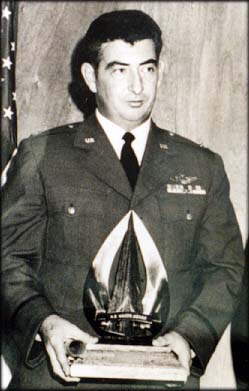
Mike Adams receiving the A. B. Honts Trophy given by the USAF Test Pilot School at Edwards AFB to the outstanding member of each class for academic achievement and flying excellence.

As had happened in some other research aircraft programs, a fatal accident signaled the end of the X-15 program. On 15 November 1967 at 10:30 a.m., the X-15-3 dropped away from its B-52 mothership at 45,000 feet near Delamar Dry Lake. At the controls was veteran Air Force test pilot, Major Michael J. Adams.
Maj. Michael J. Adams, USAF, was launched in X-15 Number 66672 on a mission to carry out seven different experiments. The flight was destined for disaster from the point of launch. At launch, the craft's vibration sensor shut down the engine. On Mike's second try, the engine ignited - 16 seconds after launch.
Starting his climb under full power, he was soon passing through 85,000 feet. Then an electrical disturbance distracted him and slightly degraded the control of the aircraft. Having adequate backup controls, Adams continued on. At 10:33 he reached a peak altitude of 266,000 feet. Major Mike Adams was now America's 27th astronaut.
At this stage of the flight, Major Adams may have been experiencing vertigo - a condition he had experienced before, and one which was experienced by many X-15 pilots on climbout. This was a feeling described as "going straight up" or even "going over backwards" - the source of more than one altitude undershoot.
In the Dryden Flight Research Center (DFRC) flight control room, fellow pilot and mission controller Pete Knight monitored the mission with a team of engineers. Something was amiss. As the X-15 climbed, Adams started a planned wing-rocking maneuver so an on-board camera could scan the horizon. The wing rocking quickly became excessive, by a factor of two or three. When he concluded the wing-rocking portion of the climb, the X-15 began a slow, gradual drift in heading; 40 seconds later, when the craft reached its maximum altitude, it was off heading by 15 degrees. As the plane came over the top, the drift briefly halted, with the plane yawed 15 degrees to the right. Then the drift began again; within 30 seconds, the plane was descending at right angles to the flight path. At 230,000 feet, encountering rapidly increasing dynamic pressures, the X-15 entered a Mach 5 spin.
In the flight control room there was no way to monitor heading, so nobody suspected the true situation that Adams now faced. The controllers did not know that the plane was yawing, eventually turning completely around. Telemetry on the High Range included over 400 channels, however did not include the heading of the craft - a situation that was later corrected. In fact, control advised the pilot that he was "a little bit high," but in "real good shape." Just 15 seconds later, Adams radioed that the plane "seems squirrelly." At 10:34 came a shattering call: "I'm in a spin, Pete." A mission monitor called out that Adams had, indeed, lost control of the plane. A NASA test pilot said quietly, "That boy's in trouble." Plagued by lack of heading information, the control room staff saw only large and very slow pitching and rolling motions. One reaction was "disbelief; the feeling that possibly he was overstating the case." But Adams again called out, "I'm in a spin." As best they could, the ground controllers sought to get the X-15 straightened out. They knew they had only seconds left. There was no recommended spin recovery technique for the plane, and engineers knew nothing about the X-15's supersonic spin tendencies. The chase pilots, realizing that the X-15 would never make Rogers Lake, went into afterburner and raced for the emergency lakes, for Ballarat, for Cuddeback. Adams held the X-15's controls against the spin, using both the aerodynamic control surfaces and the reaction controls. Through some combination of pilot technique and basic aerodynamic stability, the plane recovered from the spin at 118,000 feet and went into a Mach 4.7 dive, inverted, at a dive angle between 40 and 45 degrees.
Adams was in a relatively high altitude dive and had a good chance of rolling upright, pulling out, and setting up a landing. But now came a technical problem that spelled the end. The Honeywell adaptive flight control system began a limit-cycle oscillation just as the plane came out of the spin, preventing the system's gain changer from reducing pitch as dynamic pressure increased. The X-15 began a rapid pitching motion of increasing severity. All the while, the plane shot downward at 160,000 feet per minute, dynamic pressure increasing intolerably. High over the desert, it passed abeam of Cuddeback Lake, over the Searles Valley, over the Pinnacles, narrowing on toward Johannesburg. As the X-15 neared 65,000 feet, it was speeding downward at Mach 3.93 and experiencing over 15 g vertically, both positive and negative, and 8 g laterally. It broke up into many pieces amid loud sonic rumblings, striking northeast of Johannesburg. Two hunters heard the noise and saw the forward fuselage, the largest section, tumbling over a hill. On the ground, NASA control lost all telemetry at the moment of breakup, but still called to Adams. A chase pilot spotted dust on Cuddeback, but it was not the X-15. Then an Air Force pilot, who had been up on a delayed chase mission and had tagged along on the X-15 flight to see if he could fill in for an errant chase plane, spotted the main wreckage northwest of Cuddeback. Mike Adams was dead and the X-15 destroyed.
Adding to this tragedy, Mike's wife and mother were at NASA on the morning of the flight to monitor the flight from the viewing area outside the control room. Walter "Whitey" Whiteside recognized that Mike was in trouble and quickly led Mike's wife and mother from the control room viewing area to spare them the brutal details as Mike fought to save his life and the plane. America had suffered its first and only reentry accident and 66672 would not be destined for a museum.
Click on images to enlarge
 |
 |
 |
 |
 |
 |
 |
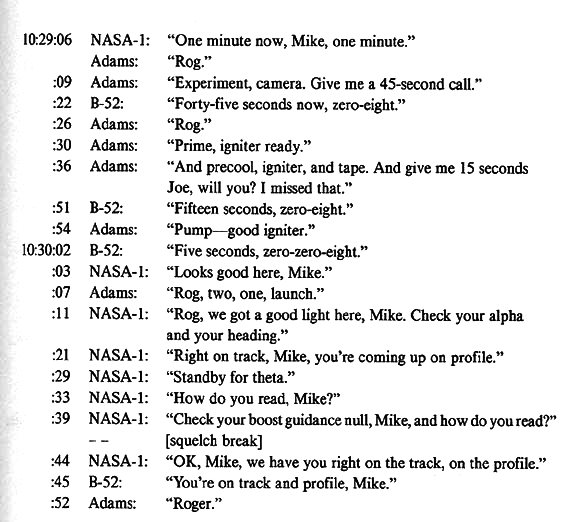
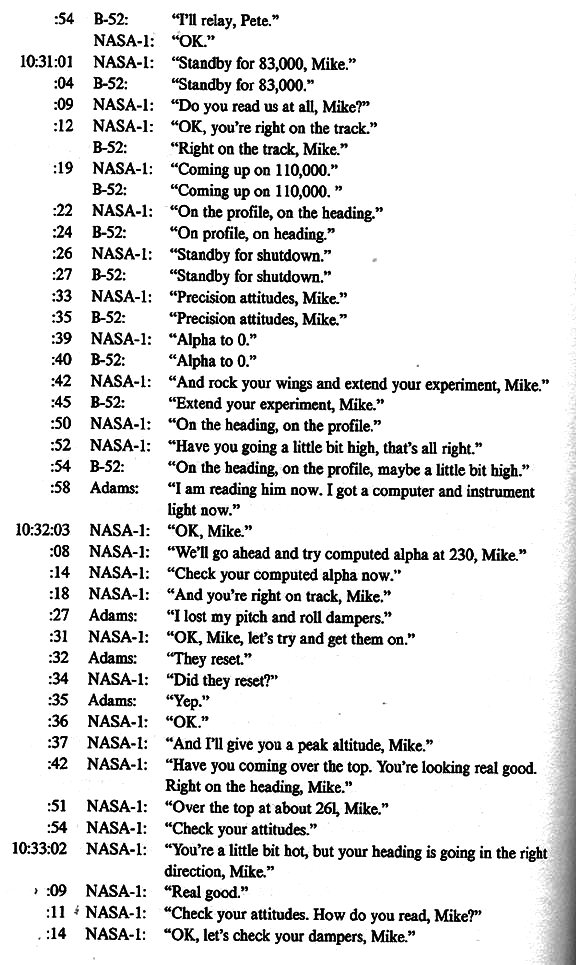
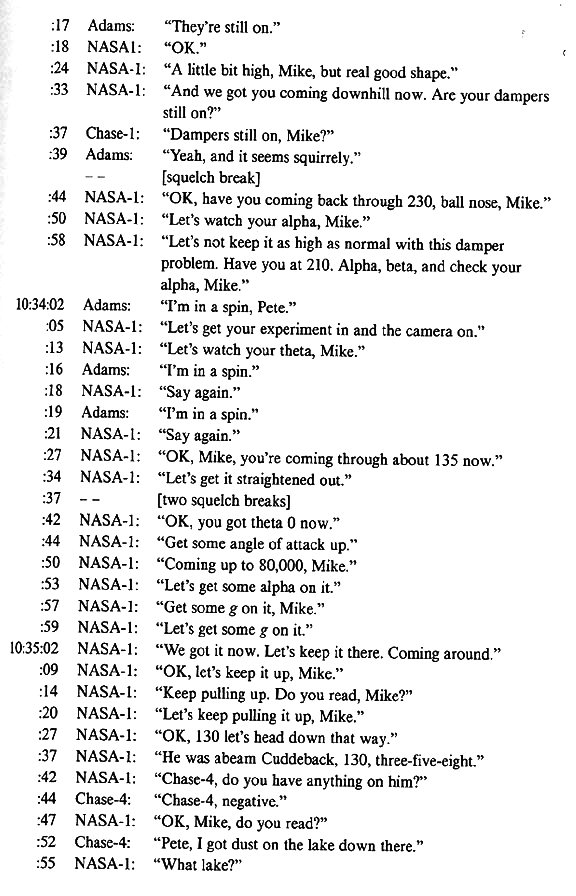
 |
 |
 |